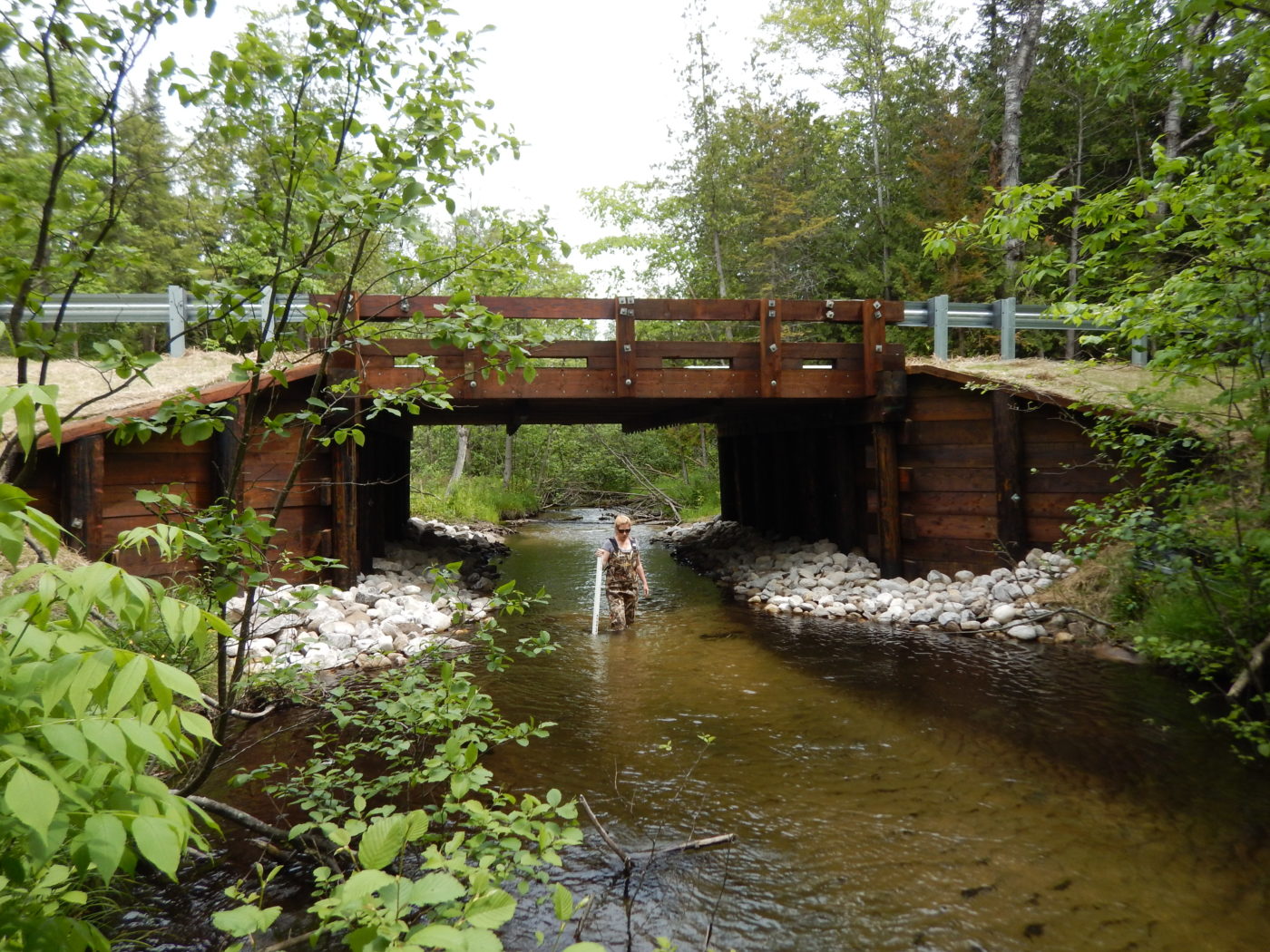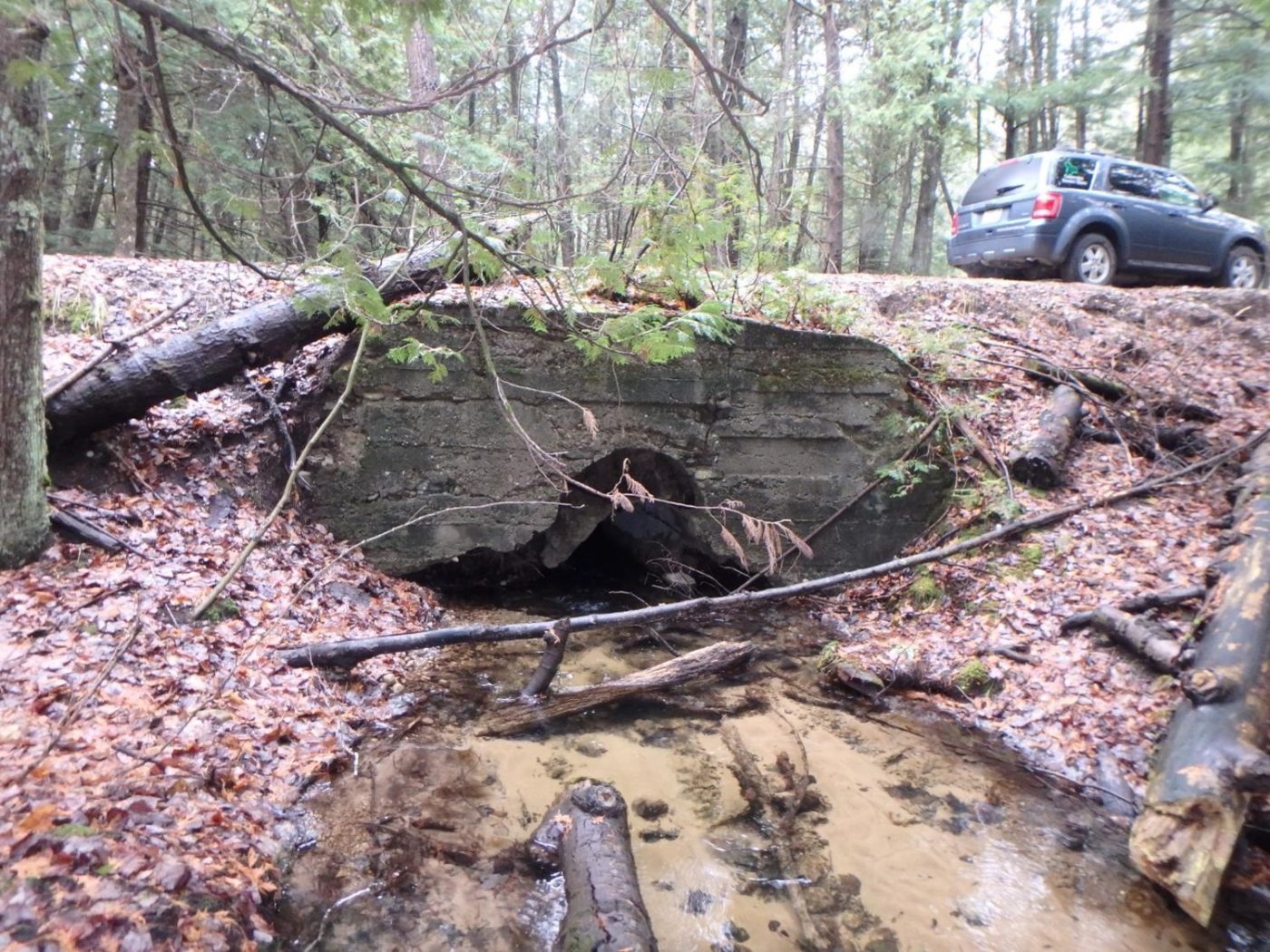“We're transforming how our streams are cared for, honoring how unique and valuable they are to our freshwater ecosystems. No other place in the world has the Great Lakes!”
-Kim Balke, CRA Project Manager & Biologist
Traverse City, MI (January 2023)—Think of the most pristine Michigan rivers you’ve seen. Imagine the clear blue-green water with brook trout and sculpin able to swim and spawn freely within. Now imagine crumbling overpass structures and outdated boiler pipes impeding these aquatic passageways. Picture tons of sediment from rain and snow melt accumulating over dozens of years and woody debris piling up over fish and insect habitats. These are the kinds of problematic environments that the Conservation Resource Alliance (CRA) has been repairing and restoring to health for more than five decades.
Founded in 1968, the CRA’s mission is to protect over 700 miles of rivers and 5,000 miles of tributaries and diverse forests throughout four million acres in Northwest Lower Michigan. It’s an audacious goal, yet one that CRA plans to accomplish with help from like-minded partners such as The Walters Family Foundation.
In 2019, The Walters Family Foundation awarded the CRA a multi-year grant to fund restoration projects on Northern Michigan rivers. Now complete, the project achieved outstanding results benefiting 15 watersheds in 17 counties, and restoring over 78 miles of connected Michigan streams.

Projects included the removal of aging structures, the construction of new culverts and the stabilization of streambeds, some of which hadn’t been restored in more than 100 years. “One of these projects unearthed an obstructive boiler pipe stamped with the year 1912… that’s how long so many of these crossing have gone untouched,” says CRA project manager and biologist, Kim Balke. “Thanks to the Walters family, we’ve been able to restore these rivers with modern infrastructure designed to last 100 years with minimal maintenance.” This allows for full aquatic connectivity, providing unrestricted fish and wildlife passage.
Local residents are already noticing the changes. CRA Director Amy Beyer has received feedback from fishermen who are seeing the return of wildlife such as river otters along restored areas of the Platte River. Another avid fisherman on the Boardman River was so impressed by the restoration efforts, he’s now donating to CRA’s conservation programs.
“These rivers are extremely important to Michigan communities,“ says Amy Beyer. “Knowing that our work provides habitat improvement for all sorts of species and helps to create enjoyment for people in our region is why we do what we do. “
CRA’s projects have not only had a large-scale ecological impact on Michigan’s most valuable rivers, but also on the Great Lakes as whole. Restoring streams from stem-to-stern is known to be a top defense for building resiliency of the Great Lakes to the threats of climate change and invasive species. “All fifteen rivers affected by that grant moved us leaps and bounds toward complete restoration,” says Beyer. “I think we've gotten more done in those two years than we've ever done in our 50-year history.”


